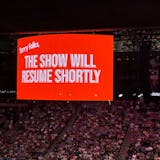While overall revenue increased 40% in Polaris Inc's second quarter, North American retail sales for the Medina-based company fell 28% compared with the pandemic-fueled surge in late spring and early summer of last year.
Profit for the quarter was $158 million, or $2.52 a share, compared with a net loss of $235 million, or $3.82 a share, in the same period of 2020 that included a $379 million pre-tax asset impairment charge related to its aftermarket business.
"All of our segments performed extremely well, posting strong increases in both sales and profitability in the face of a challenging supply chain and increasing input cost environment," said Polaris CEO Mike Speetzen in the company's earnings release. "While supply chain-related headwinds and higher input costs will continue into the second half of the year ... I remain confident in our ability to meet the product demands of our dealers and consumers and deliver value for our shareholders."
Revenue was $2.1 billion for the quarter, with retail sales up 14% over the same period in 2019.
However, the North American sales dip was due to depleted inventory from an unusually high interest in outdoor pursuits during the pandemic. On top of that, supply chains have been stressed from the pandemic, and parts can be hard to come by, so there is low availability of finished products.
"Dealer inventory literally got cut in half," Speetzen said in an interview. "Consumer demand went up. They basically were buying everything the dealers had, and then we've been trying to catch up since then."
Polaris has the overall capacity to meet the increased demand but efforts to rebuild dealer inventories have been constrained by both a continued consumer interest and shifting issues in the supply chain from a lack of components and transportation to labor shortages at Polaris suppliers.
"We don't expect the supply chain issue to abate until the end of the year," Speetzen said. "And at that point, it will be a slow improvement."



